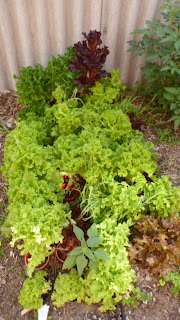Preparations are in full swing for Christmas and the to-do-list is long during this week, as we are expecting visitors from overseas. Still there is time for reflection, resolutions and plans. The year of the dragon will start on the 23 January and it's looking promising for the rat.
One of my resolutions is to eat better and simpler food, more vegetables and less carbohydrates. From a friend who normally only sends me jokes I received a very useful link this morning that inspired me to write another blog before this year comes to a close. The link with the title "Six ordinary foods that are really extra-ordinary" took my attention right away. It is a commercial venture and the guy who wrote the site wants to sell his books, but the content is great.
Have a guess what is in this list of foods! I could have named them all and it was the simplicity of the list that took my breath away. In other words, the penny dropped at the very moment I saw this list:
In my family coleslaw has never been a great feature, but an auntie used to make it often at her birthday parties. Also as a student I worked in a then Yugoslav restaurant and had to cut cabbage with a big shredder. This is where I came across my favourite coleslaw recipe:
- Shredder a small cabbage finely
- Add 1/3 cup white vinegar and 1/3 cup of light olive oil
- Add salt and pepper to taste plus a clove of garlic or two
- Massage this mixture with your hands, knead it over and over again until is becomes softer and smooth. Give it at least 3-5 minutes and work the elbow grease.
The list of special dishes traditionally eaten over Christmas and New Year is long and includes food from Silesia and Germany. We will prepare herring and potato salads, a pudding made of poppy seeds, milk and white bread. We have already baked a lot of Christmas cookies and a big gingerbread church has won acclaim, the best one ever.
Join me in making better food choices in 2012 - and for the rest of 2011. Have a very happy festive season and best wishes for 2012.















































